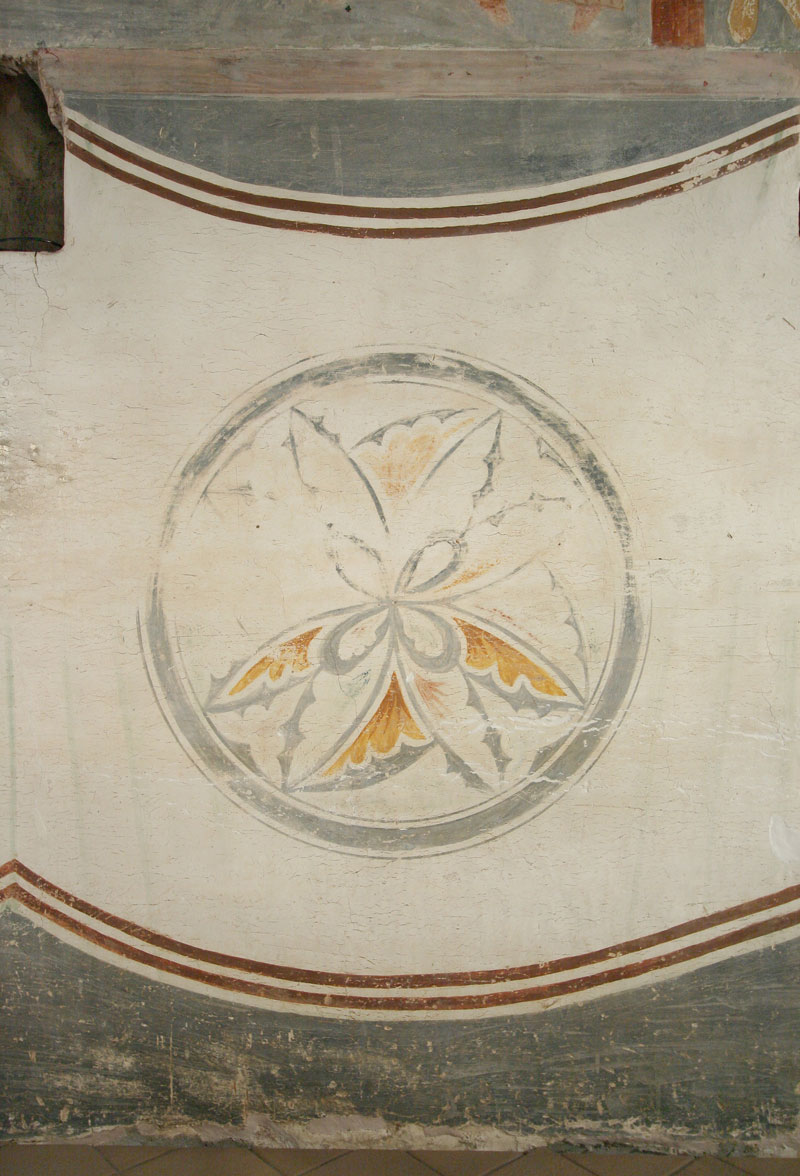
In the medallion (75 cm in diameter) there is a flower-leaf ornament against a black background. The geometrical pattern of the ornament is built of circular arcs of the medallion diameter with the foci on its circumference dividing it into four parts. The intersecting light grey arcs form a “flower” with four broad “petals” divided into three parts with additional arcs drawn from the corners of the “petals” toward small rounded “petals” in the centre. In the small “petals” there are twisted “leaves” with one wavy edge (the bottom ones face each other; the left retains traces of cinnabar while the right one has a trace of azurite). Along the long sides of the broad “petals” are “leaves” with ragged edges facing each other. The bottom “leaves’ on the sides (ochre, in the right one – just traces) with brown shading at the bases near the centre of the medallion, the inner ones retain traces of pigments: the left one has traces of blue (azurite), the right one has traces of right (ochre). In the “petals” between the “leaves” there are, presumably, judging from the form of the segments, three-petal “flowers” with a big round middle. Between the broad “petals”, arcs are drawn from the corner of one petal to the middle of the side of the adjacent “petal” on both sides of which there are fan-shaped “flowers” with wavy edges facing different directions: the inner ones face the circumference, the outer ones are orientated in an anticlockwise direction. The inner vertical “flowers” are yellow with brown shading; to the right: traces of cinnabar; in the outer ones there are traces and remnants of azurite. All the colour elements of the ornament including the wide border (3 cm) between the two thin ones have a white outline (white chalk ground).. In the centre of the medallion and on its circumference there are traces of the leg of a compass. Condition: damaged white chalk ground all over the medallion, strengthened at the bottom; thin cracks in the left and bottom parts; nearly complete loss of pigments in the upper half of the medallion; considerable loss in the lower half; complete loss of the cloth folds. Conservation 2000, restorer I.N.Fedyshin.
|

